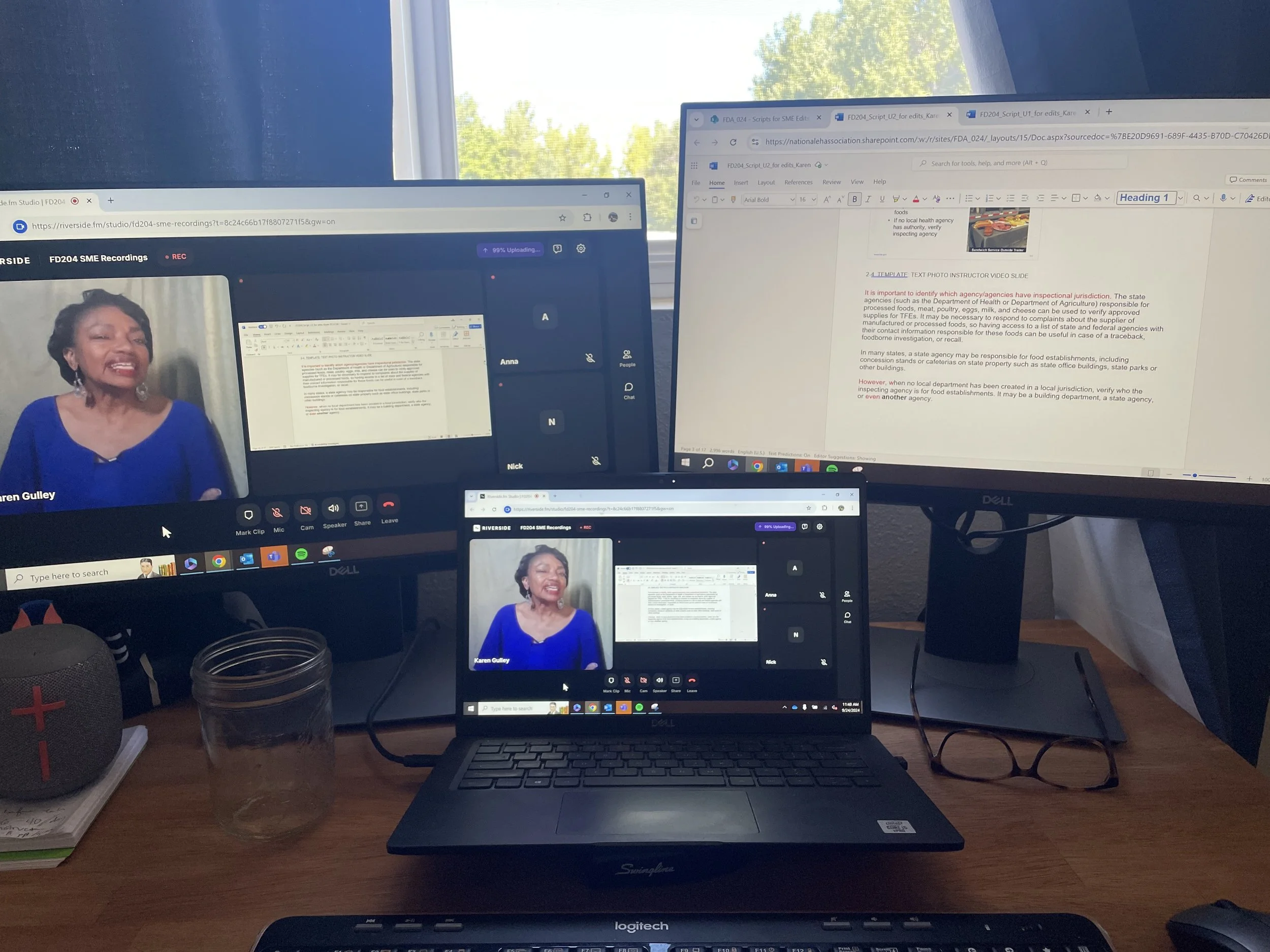
Online Asynchronous and vILT Hybrids
the challenge
One of our clients traditionally delivered all of their trainings through a vILT delivery modality. They capped their courses at 25 participants, and ran 4-day virtual trainings with a cohort of 5 instructors. In 2024, budget cuts caused them to look for ways to bring their courses to more participants, without going over their participant cap, and without paying more instructors.
the learners
Local (e.g., county- and state- level) regulators in food safety, who came to trainings with 1 to 6 years of professional experience.
the approach
I wanted to maintain the feel of the vILT environment as much as possible. Participants should feel that the content was still being delivered by SMEs who had worked in the field and could provide a “been there, done that” atmosphere.
the team
5 SMEs
1 videographer
2 internal course delivery staff
1 instructional designer (myself)
the software
Riverside.fm
Microsoft Word
Microsoft PowerPoint
the learning solution
We decided to create a series of Online/Asynchronous plus vILT hybrids, with SMEs delivering content by recored presentation in the Online/Asynch portion of the course. This allowed us to decrease the virtual training day from 4 business days to 1 business day.
Our course conversion process included the following 6 phases:
a SME review process to first make any necessary content updates
parsing content into delivery modalities based on conceptual complexity: online/asynch or vILT
developing the script for SME filming (for the online/asynch components)
coaching and filming SMEs delivering content
online/asynch course authoring
development of vILT materials
my role
Project lead; consulting with SMEs to develop the script used in film delivery; coaching SMEs on delivering content to the camera on film; script checking for accuracy during filmed content delivery; approving final cuts from the videographer; proof reading closed captioning; developing slide deck to accompany vILT portion of the course.

Production Process Gallery

The six phases of our course conversion process.

Coaching and filming one of our SMEs. The script she is using is visible in my right monitor. The program we use to record, Riverside.fm, appears on my laptop and left monitor.

Highlights from a page of the completed online/asynch portion of the course. Here you see the SME video, with optional closed captions, the core content the SME is speaking about, and a link for a resource he mentions during his presentation.

A few sample pages from the participant guide that accompanies the vILT portion of this course. We maintained the applied, practical components of the curriculum in the vILT portion to optimize real-time interaction with the SME instructors for the sections that participants would have the most questions about.